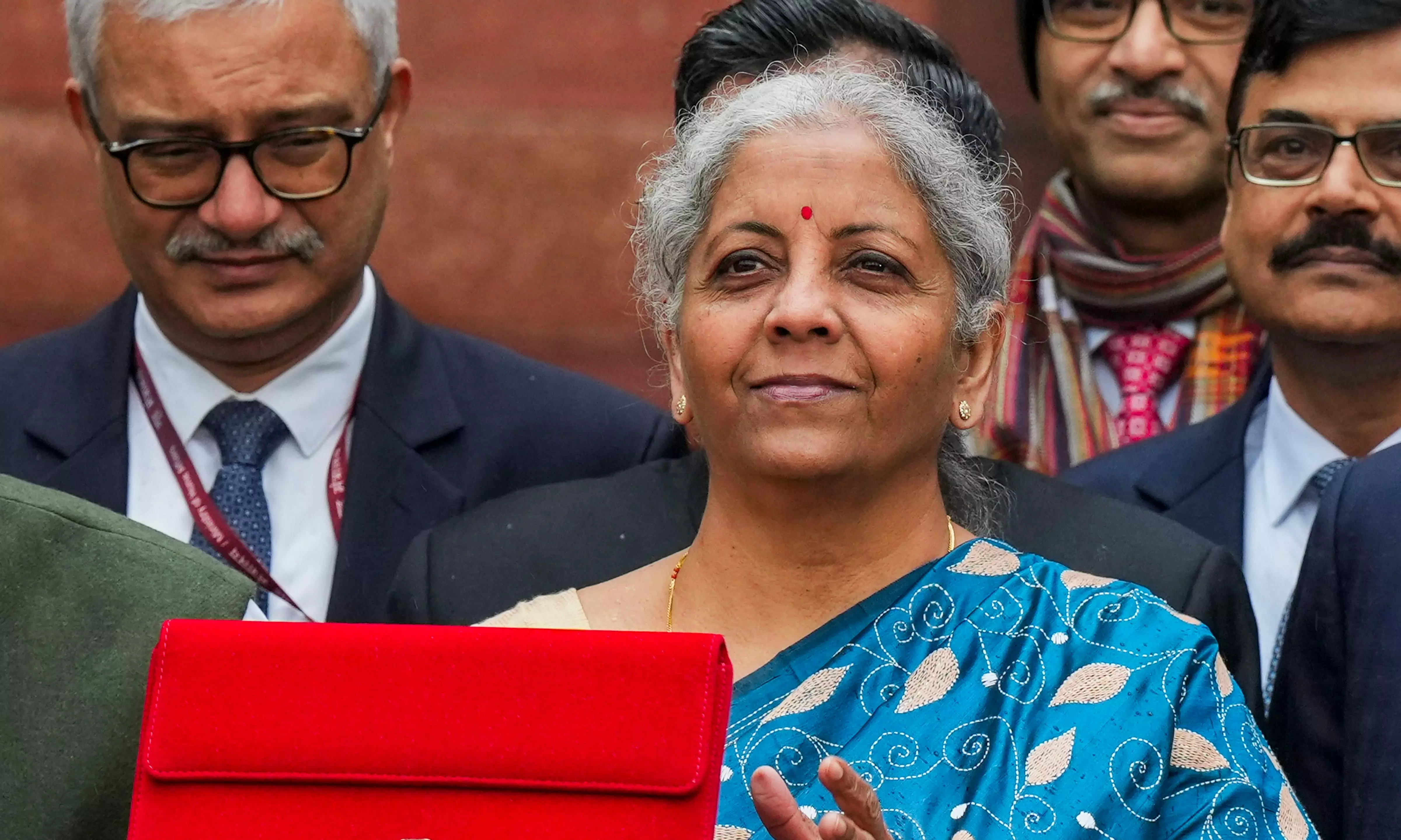
Nirmala Sitharaman seeks to marry fiscal discipline with poll agenda
Increase in tax mop-up, reining in of fiscal deficit reflect cautious economic approach; MGNREGA allocation, waiver of outstanding IT demands have eye on voter

Finance Minister Nirmala Sitharaman's Interim Budget 2024-25, which she presented to Parliament on Thursday, not only fulfilled its conventional role as a financial statement but also served as a strategic political narrative, highlighting the NDA government's achievements over its decade-long tenure.
This approach subtly shifted the budget's essence from a mere financial account to a comprehensive report card of the government's tenure, aiming to appeal to the electorate's aspirations and achievements.
In keeping with the contours of an interim budget, Sitharaman made it clear that there will not be any changes in direct and indirect tax proposals.
Fiscal tightening
Sitharaman, presenting her sixth budget, has projected Rs 27.56 lakh-crore in revenues for the fiscal year 2023-24, with a notable increase in tax collections. The fiscal deficit has been adjusted to 5.8 per cent of GDP, reflecting a cautious optimism despite growth challenges.
For 2024-25, the government has projected a further tightening of the fiscal belt, aiming for a 5.1 per cent deficit amidst rising expenditures. The FY25 infrastructure outlay has also been increased to Rs 11.11 lakh-crore against the budgeted Rs 10 lakh-crore for FY24. She pointed out that the direct tax collections have more than trebled over the last 10 years, and the return filers swelled to 2.4 times.
By focusing on key societal segments — poverty alleviation, youth empowerment, women's advancement, and farmers' welfare — and announcing significant investments like the Rs 1 lakh-crore corpus for R&D in emerging sectors, Sitharaman's speech blended economic progress with electoral appeal.
Electoral appeal
Two proposals brought into focus the government’s populist measures ahead of the elections. One was the announcement to waive outstanding direct tax demands up to Rs 25,000 for the period up to FY 2009-10, and up to Rs 10,000 for financial years 2010-11 to 2014-15, which is expected to benefit around 1 crore taxpayers.
The other one was increasing the allocation for the Mahatma Gandhi National Rural Employment Guarantee Scheme from Rs 60,000 crore in 2023-24 (BE) to Rs 86,000 crore in 2024-25 (BE).
Revenue and expenditure
For FY 2023-24, the Finance Minister said the government expects to collect a total of Rs 27.56 lakh-crore, excluding loans, with Rs 23.24 lakh crore coming from taxes. The planned spending is Rs 44.90 lakh-crore. Revenue receipts are higher than initially budgeted at Rs 30.03 lakh-crore, showing strong economic growth and formalisation. The fiscal deficit is revised to 5.8 per cent of GDP, an improvement despite lower growth estimates.
For 2024-25, total receipts (excluding loans) and spending are projected at Rs 30.80 lakh-crore and Rs 47.66 lakh-crore, respectively, with tax receipts at Rs 26.02 lakh-crore.
The government continues with its commitment to reduce the fiscal deficit to below 4.5 per cent by 2025-26, targeting a deficit of 5.1 per cent for 2024-25. Borrowing will decrease to allow more credit for the private sector, with gross and net market borrowings estimated at Rs 14.13 lakh-crore and Rs 11.75 lakh-crore, respectively.
Cautious approach
The 2023-24 revised budget estimates and the 2024-25 budget projections reflect a cautious approach toward fiscal management and economic growth. While the increase in tax and revenue receipts in 2023-24 highlights a positive economic momentum and the formalisation of the economy, the fiscal deficit remains a concern, albeit with improvements.
For 2024-25, the commitment to fiscal consolidation is evident, with a planned reduction in the fiscal deficit to 5.1 per cent of GDP. Yet, achieving this amidst planned increases in expenditure will require robust revenue generation and prudent spending.
Focus on infra
The continuation of interest-free loans for state capital expenditure indicates a focus on infrastructure development. However, the success of these measures in stimulating sustainable growth while managing the deficit will be critical to watch.
Sitharaman also announced implementing three major railway corridor programmes under the PM Gati Shakti scheme to improve logistics efficiency and reduce cost.
The government, under the Pradhan Mantri Awas Yojana (Grameen), she said, is close to achieving the target of 3 crore houses, with an additional 2 crore targeted for the next 5 years. She also announced that a housing for the middle-class scheme would be launched to encourage the middle class to buy/build their own houses.

